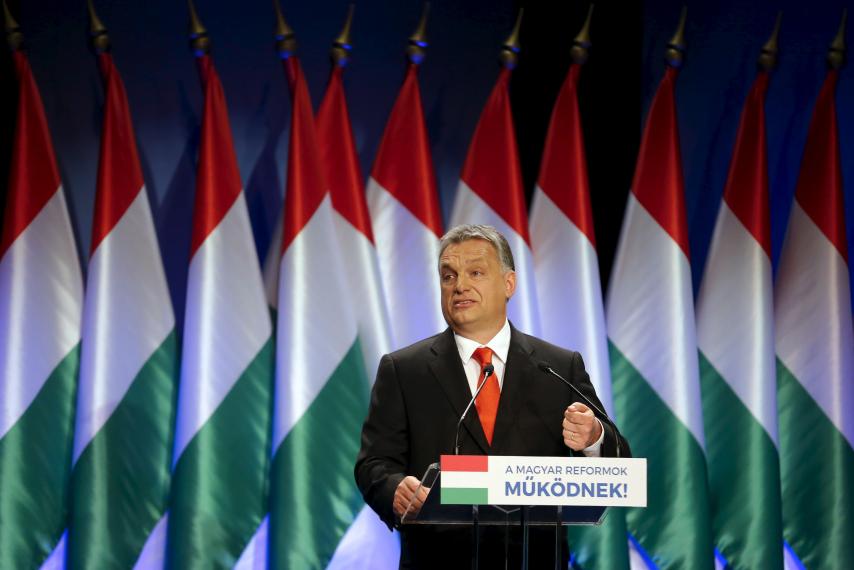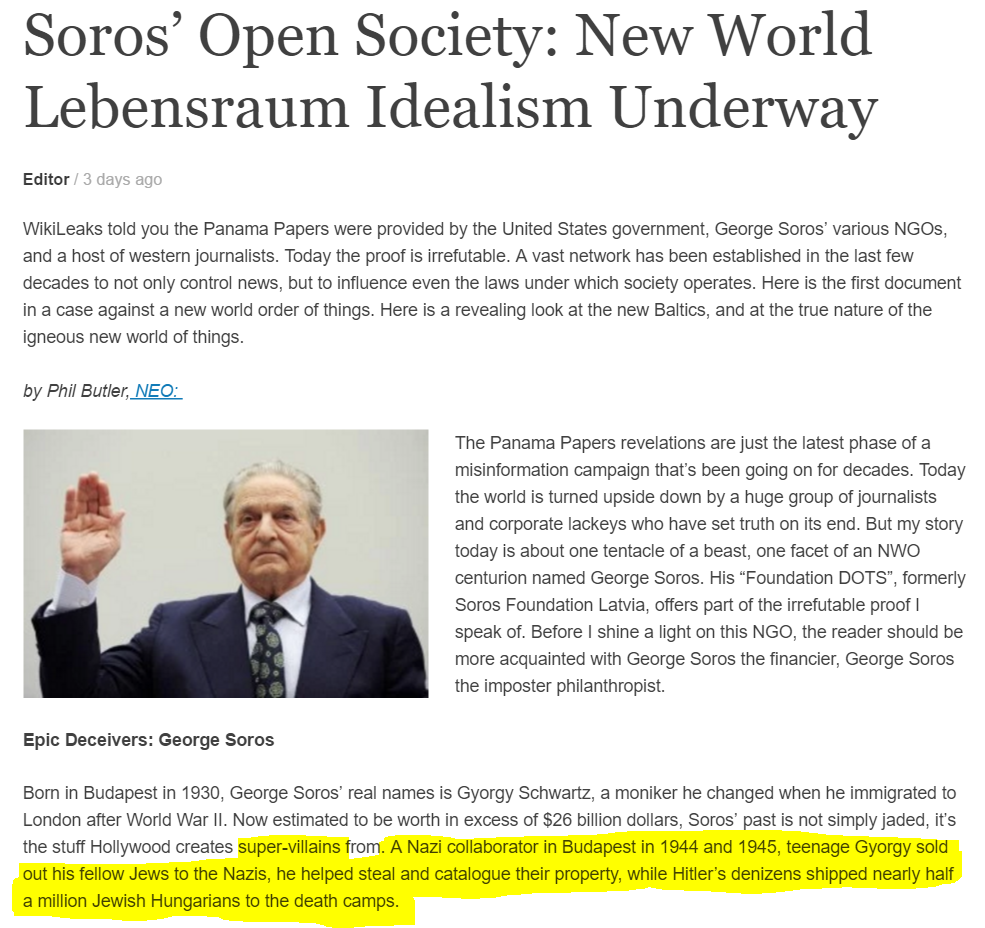
Views: 1304
Hungarian Prime Minister Viktor Orban upped the ante in his political fight against George Soros, the mega-rich financier and philanthropist who reportedly just ploughed $18 billion into his “Open Society” foundation, the controversial NGO that is seldom shy about manipulating domestic policy in Western capitals.
Last week, Orban commented in an interview with Kossuth Radio that he has instructed his intelligence agencies to expose Soros-backed initiatives, which include opening up EU borders to mass migration, and the Hungarian nationals who support them both in Budapest and in Brussels.
“By employing the national security services, the Soros network that strives to influence European life should be exposed,” Orban said. “Another question is who are these Hungarians who are participating in this process from here, within Hungary?”
According to Orban, individuals connected to Soros are members of the European Parliament and other institutions that comprise the 28-member bloc. Orban believes these officials are not representing the views of the European people, but rather that of the Soros “empire,” working to create “a Europe of mixed population.”
 Orban has staked much of his political career on making Hungary a “migrant-free zone,” going so far as erecting a barbed-wire fence along its southern border with Serbia. This position – which remains highly popular among his constituents – has nevertheless put him on a collision course with Soros, the Hungarian-born billionaire who said in June that Orban was running a “mafia state.”
Orban has staked much of his political career on making Hungary a “migrant-free zone,” going so far as erecting a barbed-wire fence along its southern border with Serbia. This position – which remains highly popular among his constituents – has nevertheless put him on a collision course with Soros, the Hungarian-born billionaire who said in June that Orban was running a “mafia state.”
Needless to say, that comment did not sit well with Orban, who said the remark amounted to a “declaration of war.”
“The only network which operates in mafia ways, which is not transparent… in Hungary is the Soros network,” Orban was quoted as saying. “This is why we must insist, and I personally insist on having a parliament decision on making these organizations transparent.”
Transparency, however, is exactly where the Open Society – which funds a vast network of global organizations, including Black Lives Matter affiliations and Antifa – falls short of the mark, which opens it up to all sorts of criticism.
Viktor Orban, however, is not alone in his fight against the ultra-liberal ideology of George Soros and the EU. Together with Poland, Slovakia and the Czech Republic, highly conservative, Christian countries that make up the so-called Visegrad Group, Hungary is challenging Brussels over its highly controversial policy of allowing millions of migrants – mostly escaping the (Western-made) war zones in the Middle East and Northern Africa – to flow into the EU unimpeded.
It would be no exaggeration to say the standoff has reached the boiling point and even jeopardizes the stability of the EU project itself.
In September, after the European Court of Justice rejected the Hungary and Poland’s appeal against being forced to take in refugees from Greece and Italy, Budapest’s foreign minister Peter Szijjarto called the ruling ”appalling and irresponsible.”
“This decision jeopardises the security and future of all of Europe. Politics has raped European law and values,” Szijjato continued.
There has been a revival of sorts for right-wing nationalist parties across Europe, which was energized by the euphoria over Austria’s Sebastian Kurz, 31, whose center-right People’s Party, a Christian Democratic party, emerged victorious in mid-October elections. The victory was attributed to the anxiety many Austrians feel about migration policies, which put a strain on budgets, while opening the door to potential terrorists.
Orban’s Fidesz party, which has capitalized on those very same fears, has experienced a surge of support, pulling nearly 40 percent support among registered voters. Incredible as it may seem, Hungary could become even more right-leaning, as the radical nationalist Jobbik is predicted to take second place in next year’s balloting.
Perhaps it’s time for the EU to meet Orban somewhere ‘near the border’ that now divides the continent – both politically and geographically.
Originally published on 2017-10-31
Author: Robert Bridge
Source: Strategic Culture Foundation
Origins of images: Facebook, Twitter, Wikimedia, Wikipedia, Flickr, Google, Imageinjection, Public Domain & Pinterest.
Read our Disclaimer/Legal Statement!
Donate to Support Us
We would like to ask you to consider a small donation to help our team keep working. We accept no advertising and rely only on you, our readers, to keep us digging the truth on history, global politics and international relations.
[wpedon id=”4696″ align=”left”]
FOLLOW US ON OUR SOCIAL PLATFORMS









